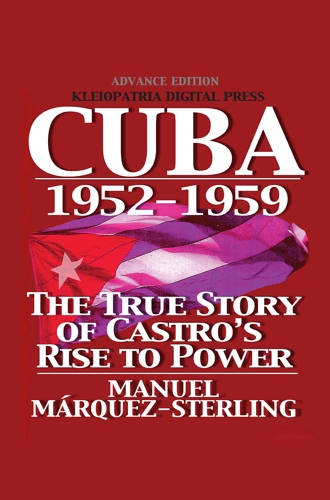October 15, 1957
On 15 October leaders of the Autenticos and the revolutionary wing of the Ortodoxos, joined with representatives of the DR (Student Revolutionary Directorate) and the 26th of July Movement (authorized by Castro) to announce their formation of the Junta de Liberación Cubana (Cuban Liberation Junta, also called Cuban Liberation Council).
The Miami armchair revolutionaries were troubled to see media attention increasingly shifting from them to Castro. Noticing their parade thinning, they scampered to join Castro’s and share in its attention. Demonstrating their unworthiness and incompetence as political leaders, they responded to their waning following and press coverage by redoubling their faith in force and violence as the way to political power.
Blinded by hatred for Batista and their lust for political power they embraced "the ends justify the means" as their guiding principle. This led them to reject the call of the Manifesto of the Five and Carlos Márquez-Sterling’s invitation to unite and participate in the 1958 elections, choosing instead to support Castro’s efforts to use thuggery and terrorism to derail and sabotage the 1958 elections. Their rabid partisanship made "punishing Batista" their overriding goal—even more important than preserving Cuba's democratic institutions. The program of the Liberation Junta was in significant measure a public relations exercise intended to (deceptively) portray the revolutionary factions in exile as united and actively playing a leadership role in the revolutionary opposition efforts against Batista.
The Liberation Junta made many declarations and announcements. With much fanfare, on the first of November they publicly signed the Pact of Miami (also known as the Unity Pact, “Pacto de UNIDAD”). An English translation of the main provisions of the Pact is found in Dubois’ “Fidel Castro”.
As part of the Pact of Miami the Junta publicly announced its unanimous election of Felipe Pazos (Castro’s M-26-7 delegate to the Junta) as future Provisional President of Cuba after the fall of Batista. A respected economist, Pazos had served as president of the National Bank of Cuba in the Prío administration. To all appearances Pazos and other delegates justifiably believed that they were acting in accord with the principles proclaimed in the Manifesto of the Sierra and its provisions. Pazos and fellow delegate Raul Chibás were (along with Castro) the signers of the Sierra Manifesto
Among the signatories of the Pact of Miami were Carlos Prîo, Carlos Hevia, Carlos Maristany and Tony Varona (Autenticos); Manuel Bisbé and Roberto Agramonte (Ortodoxos); Felipe Pazos, Raúl Chibás, Léster Rodriguez, Lucas Morán and Mario Llerena (M-26-7); Alberto Mora, Ramón Prendes and Faure Chomón (FEU-DR/Student Revolutionary Directorate); Angel Cofiño (CTC/Revolutionary Workers Directorate); and Lincoln Rodón and José R. Andreu (Demócratas).
based on Manuel Márquez-Sterling's Cuba 1952-1959 and
Cuba 1952-1959 Interactive Timeline
Cuba 1952-1959 Interactive Timeline


 Mobile subscription
Mobile subscription



No comments:
Post a Comment